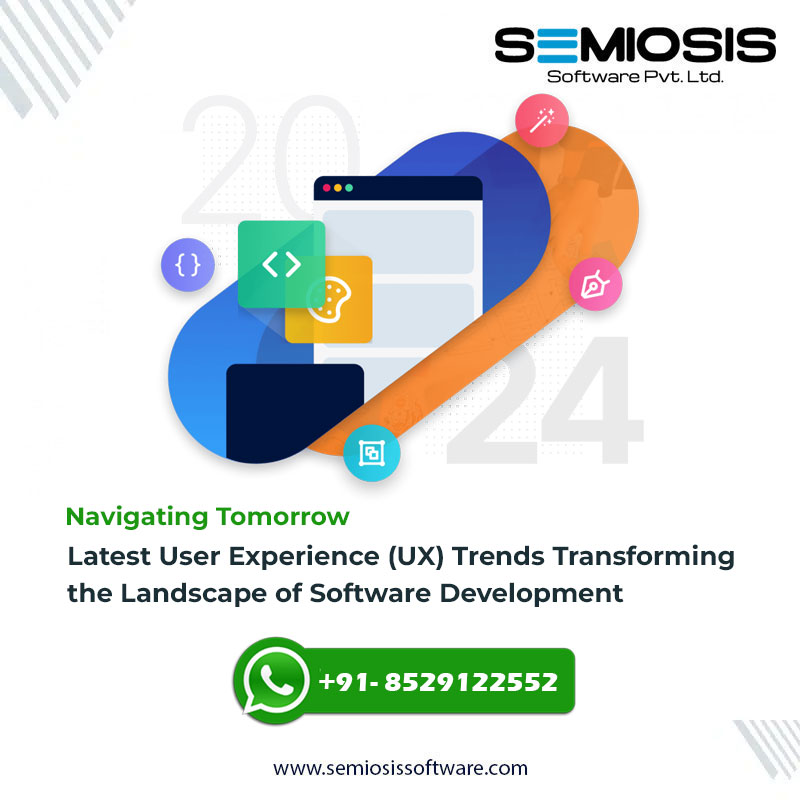Introduction – UX Trends
In the ever-evolving realm of technology, user experience (UX) stands at the forefront of software development. As we navigate the digital landscape of tomorrow, staying abreast of the latest UX trends is paramount. The continuous innovation in UX not only enhances user satisfaction but also plays a pivotal role in shaping the success of software applications. In this blog, we will delve into the cutting-edge UX trends that are transforming the landscape of software development.
-
Human-Centered Design – UX Trends
At the core of the latest UX trends is a steadfast commitment to human-centered design. Developers are increasingly recognizing the importance of understanding and empathizing with users to create more intuitive and enjoyable experiences. By incorporating user feedback throughout the development process, software designers can ensure that their products align seamlessly with the needs and expectations of the end-users.
The integration of AR and VR technologies has opened new frontiers in UX design. These immersive technologies are not limited to gaming; they are becoming integral to various applications, from e-commerce to education. By offering users a more interactive and engaging experience, AR and VR are redefining how we interact with software, bringing a sense of realism and excitement to the digital world.
-
Voice User Interface (VUI) – UX Trends
Voice-activated technologies have witnessed a surge in popularity, thanks to the prevalence of virtual assistants like Siri, Alexa, and Google Assistant. As natural language processing continues to advance, incorporating VUI into software applications is becoming a norm. This trend not only enhances accessibility but also provides a hands-free and efficient way for users to interact with their devices.
-
Minimalist Design and Microinteractions – UX Trends
In the pursuit of simplicity and elegance, minimalist design principles are gaining traction in UX. Clean and uncluttered interfaces not only enhance visual appeal but also contribute to a more intuitive user experience. Additionally, microinteractions—subtle animations or feedback loops—add a layer of dynamism to the user interface, making interactions more enjoyable and engaging.
-
Responsive and Adaptive Design – UX Trends
With users accessing software applications across a myriad of devices, ensuring a consistent and seamless experience is crucial. Responsive and adaptive design approaches are becoming standard practices, allowing applications to adjust seamlessly to different screen sizes and resolutions. This trend not only enhances accessibility but also future-proofs software in the face of ever-evolving technological landscapes.
-
Personalization and AI-driven Experiences – UX Trends
Artificial Intelligence (AI) is playing a pivotal role in revolutionizing UX through personalization. By analyzing user behavior and preferences, AI algorithms can tailor experiences to individual users, providing more relevant content and recommendations. From personalized content feeds to adaptive interfaces, AI is unlocking new dimensions of user engagement and satisfaction.
-
Biometric Authentication and Security – UX Trends
As the need for robust security measures grows, biometric authentication is becoming an integral part of UX design. Fingerprint recognition, facial recognition, and other biometric methods offer a secure and convenient way for users to access their applications. This trend not only enhances security but also streamlines the authentication process, contributing to a frictionless user experience.
Conclusion – UX Trends
As we navigate the ever-evolving landscape of software development, staying attuned to the latest UX trends is indispensable. From human-centered design principles to the integration of emerging technologies like AR, VR, and AI, the future of UX holds exciting possibilities. By embracing these trends, developers can create software applications that not only meet the functional requirements but also delight users with seamless, intuitive, and personalized experiences. As we unveil the latest UX trends, we are shaping a tomorrow where software isn’t just a tool but an immersive and enjoyable journey for users.






